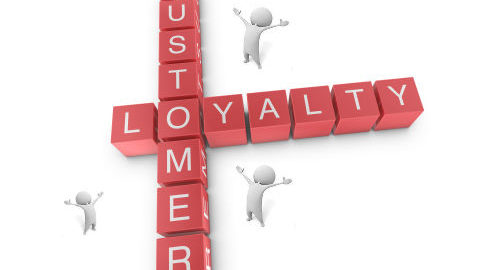Where Have All Your Best Customers Gone?
How to Leverage Your Customers For New Business.
PART ONE
I have been thinking a lot lately about a conversation that I have had hundreds of times the past four years with business owners, ever since I launched my business consulting firm to help business owners, start-ups, and entrepreneurs achieve sales success. The conversation goes something like this:
My Customer: “I need your help finding new customers.”
Me: “Why”
My Customer: Stares at me like I have 3 heads. “What do you mean…’why?’ I need to acquire new business in order to keep my business running, so I need new clients.”
Me: “I understand. But what about your current customers?”
My Customer: Now stares at me like I have 4 heads. “What do you mean? Why would I focus on my customers? They already know what products I make and services offer. I need MORE customers to grow my business”
Me: Grab my head with both hands as I scream “OYE!”
This MAY be the single biggest problem facing small business owners today. In their pursuit of new client acquisition in these demanding times, business owners lose sight of just how critical it is to deliver exceptional client relationship management to their best customers.
In these turbulent times, it’s critical that business owners remain in touch with their top accounts. Take your best clients to breakfast. Reassure them that you are here for them, and will continue to do so and support them when they need you. Why not accompany them on their sales calls, to see first hand the challenges they face in selling to their own customers?
Learn your best customer’s pain points, so you can deliver exceptional solutions to the problems that keep them up at night. Have you created a detailed profile of your absolute most valuable customer? Can define and describe your best customers in complete detail? If yes, great! If no…well, how are you going to find other (new) customers that are JUST LIKE THEM? Do you have a strategic networking plan that lists all of the key events, trade shows, and conferences that your best customers attend? No? You should. How else will you know where your best customers are going to be, so you can coordinate strategic efforts to meet with them?
Your existing customers deliver 85% OF YOUR BUSINESS to you! Most small businesses obtain 50% of their new business from their existing customers. That’s half your business coming from existing customers. On top of that, 35% of your NEW customers are referred to you by your existing clients. That means…85% of ALL small business sales comes from their existing customers. According to Inc. it is 5-10 times LESS expensive to serve existing clients than it is to obtain new customers. On top of that, existing customers buy 67% more on your products and services than new customers do. So if you want to grow your business, you MUST re-focus your sales efforts on serving your BEST customers first, then on new client acquisition efforts.
Reward Your Customers Like Loyalty
Reward your best customers. Offer them truly meaningful loyalty programs that they care enough about to participate in. Do you provide your best customers with specific discounts, honor ANY of their returns, wipe out their existing balances on small amounts when they keep buying from you? Do you provide them with coupons they value? Do you deliver them promotional offers that only they are eligible for? Do you have a rewards program that serve up rewards based on their specific interests, and the things they value? Or, do you take a “one-reward-for-all” approach that means little to MOST of your clients?
Of the $48 billion worth of perceived value in reward points and miles distributed by American businesses annually, 33% goes unredeemed by consumers. 1/3 of ALL reward points for ALL businesses goes unclaimed!!! Companies lose significant money on wasted time and effort, and customers get NO REAL VALUE from the businesses to which they are most “loyal.”
Only 20% Of Your Customers REALLY Matter. A Dirty Truth.
Vilfredo Pareto was an Italian economist and sociologist who developed a mathematical formula in 1906 (today its known as the “80/20 rule”) to explain the extremely uneven income distribution in Switzerland. He found that most for the wealth in the country was consolidated within a very small percent of the population (sound familiar, my fellow Americans?)
In the 1940s Dr. Joseph Juran (an American) took Pareto’s work further by researching many different industries and companies of all sizes. He found that in every aspect of business & industry, in any set of data a relatively small percent of the entire data sample (Juron proved that amount at 20%) are statistically significant (vital) and 80% of any data set are relatively trivial. Juron found that this was true in all instances.
The beauty of Juron’s work was, it could be applied equally to any endeavor. What does this mean for small business owners looking to maximize their existing customers, you ask?
* 20% of Your clients generate 80% of your entire business.
* One in five of ALL your clients place 80% of all your company’s orders.
* 20% of Your customers purchase 80% of Your stuff!
The key challenge to any business owner looking to increase their new business is: Who are the top 20% of your very BEST customers, and…
WHAT THE HECK ARE YOU DOING TO MAKE THESE FOLKS AS HAPPY AS POSSIBLE???
In my next issue, I’ll tell you how you can find your top 20% and do everything in your power to keep them buying from you.
















